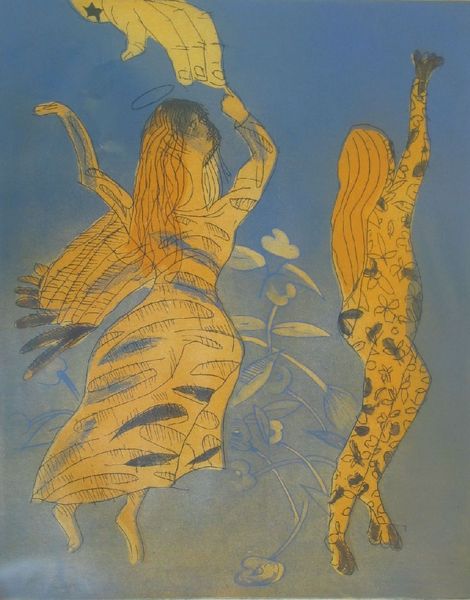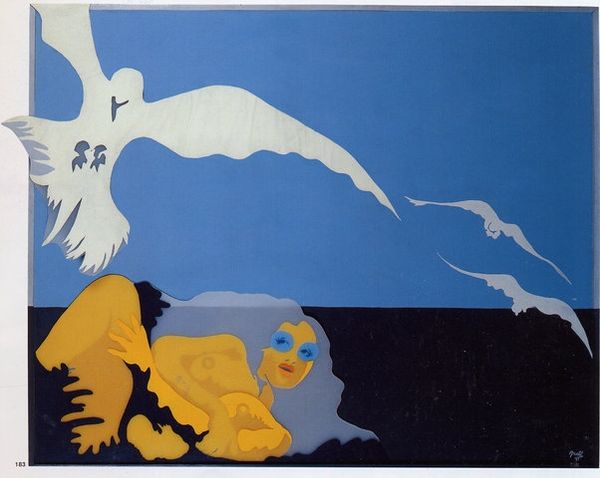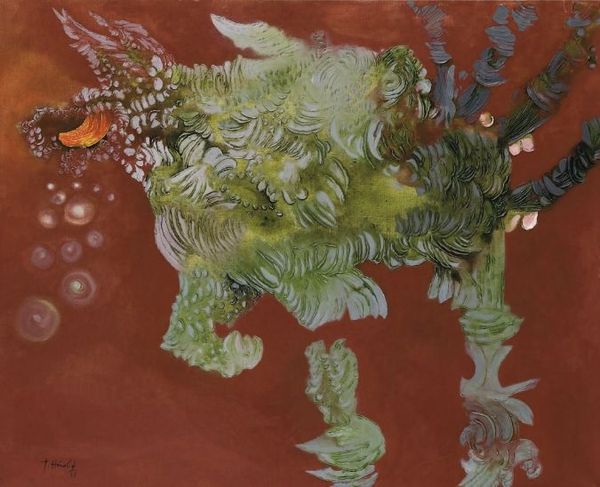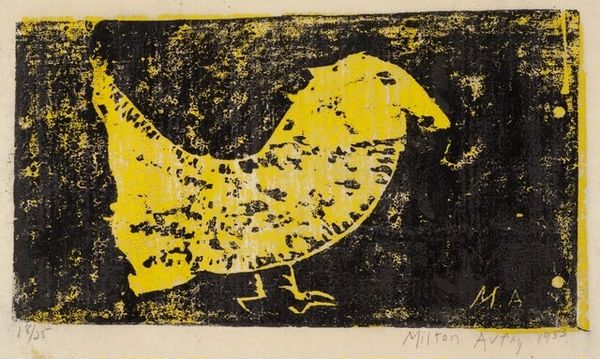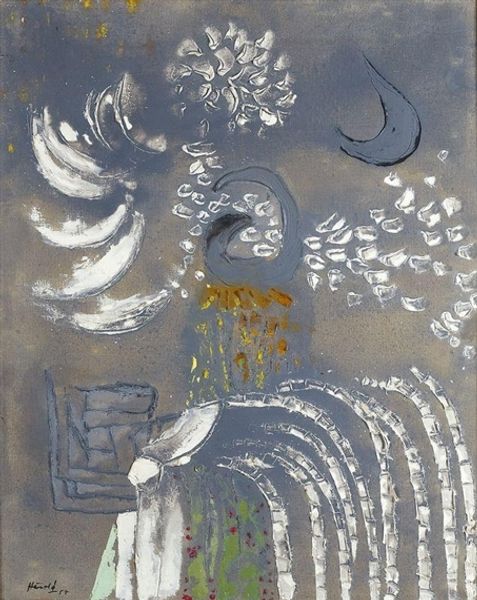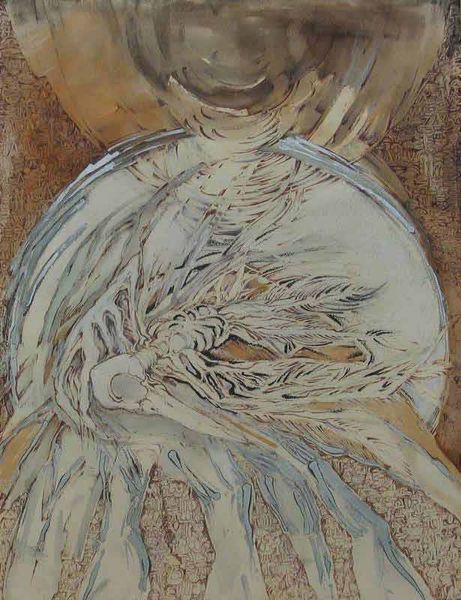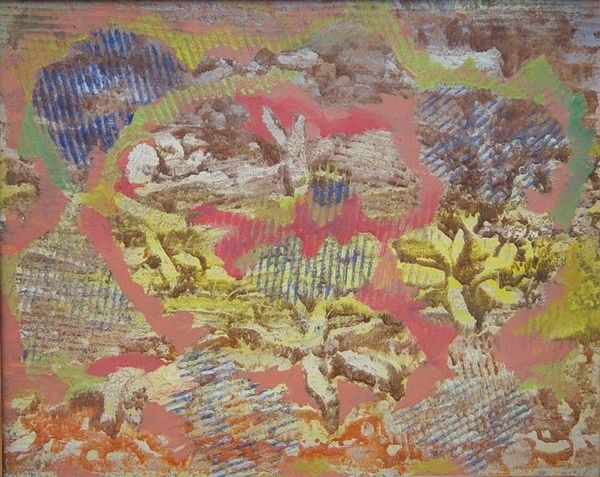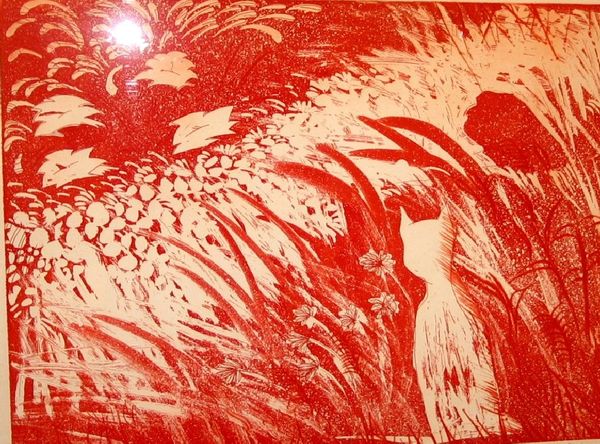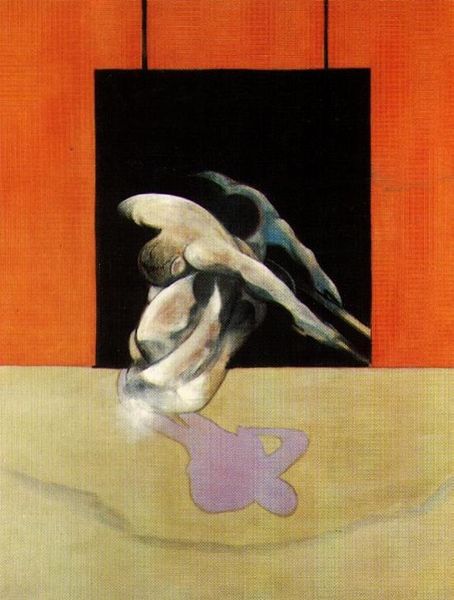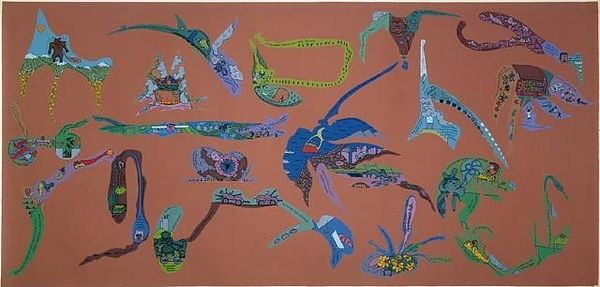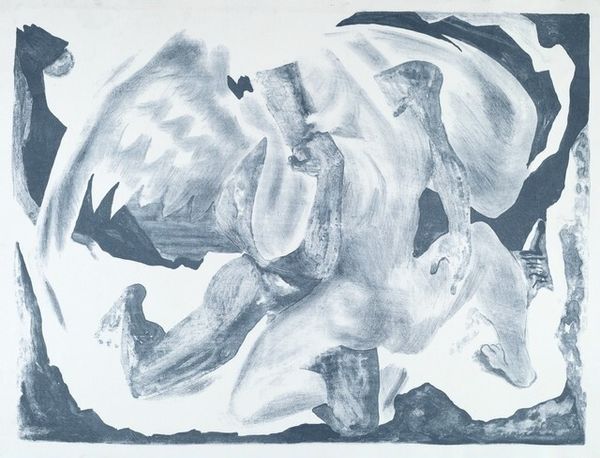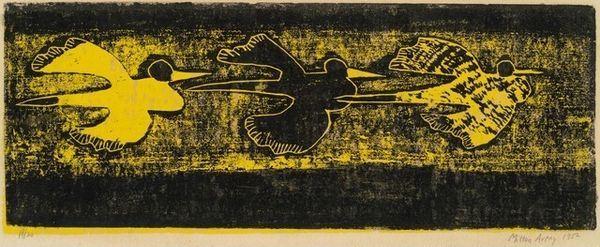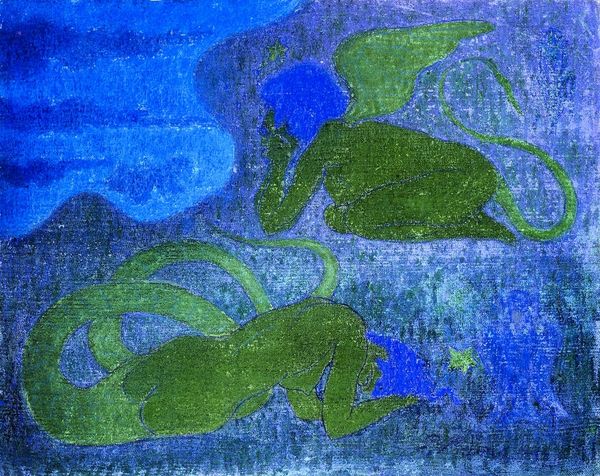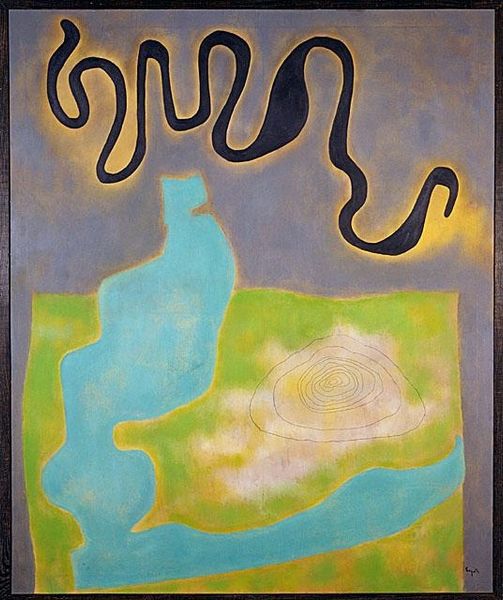
#
acrylic
# print
#
figuration
#
geometric
#
line
#
abstract art
#
modernism
Copyright: Charles Blackman,Fair Use
Curator: Let's turn our attention now to Charles Blackman's "The Journey," a print rendered in acrylic. It presents a rather dreamlike tableau, doesn’t it? Editor: It certainly does. My immediate reaction is to its somewhat haunting, ethereal quality. The stark lines against the muted color field create an unnerving sense of displacement. Curator: That resonates. Blackman's works often tap into archetypal themes and dream states. Notice how the figure, seemingly suspended in air, has these grid-like patterns overlaying it, like a trapping. Is this a reference to loss of control, and where are we being carried? And the cat below her... perhaps an astral guide? Editor: Interesting points. But speaking formally, consider the contrast between the fluidity of the figure and that solid, almost pixelated form of the feline shape. That deliberate juxtaposition creates a wonderful tension that, in turn, gives depth to what would otherwise be a very flat image. It suggests two ways of being. Curator: Exactly, that tension mirrors the dichotomy between our conscious and subconscious, a world he often visited through his "Alice in Wonderland" series, and continuing to investigate themes around vulnerability, transformation, and even, in some instances, trauma. Even a hand at the top seemingly wants to grasp this escaping form... or perhaps push her down further. The dreamlike nature is very strong with the layering of the elements. Editor: You are right. And consider that constrained palette! The subtle gradations within those blue and yellow zones guide the eye, almost as if mapping out the internal world. I think Blackman achieves an incredible spatial ambiguity here. Curator: Indeed. Blackman invites us to examine our own internal maps, journeys charted through our experiences and encounters. This piece echoes his broader explorations of Australian identity and our individual relationship with it. Editor: It certainly gave me some interesting things to think about. It is often very hard to capture trauma with simple lines but there is real emotive quality here. Curator: Precisely. It is a succinct example of modern storytelling.
Comments
No comments
Be the first to comment and join the conversation on the ultimate creative platform.
